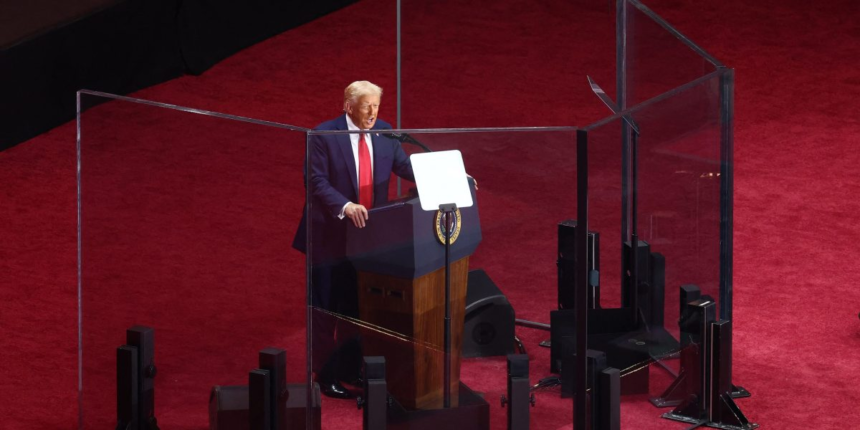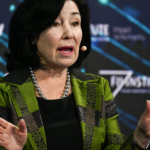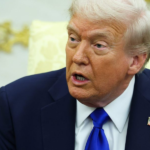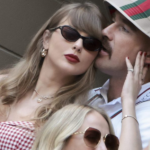Toby Braun, international security expert and founder of American Special Investigative Group, told Fortune the event was “one of the most fortified memorial services in recent U.S. history,” with security layers in every aspect of the environment, from the airspace above the venue to the streets below.
Highly-visible measures included the transparent ballistic glass onstage designed to resist both gunfire and explosive blasts, TSA-like magnetometer checkpoints, security fencing, road closures, and vehicle checkpoints—and a massive amount of both law enforcement and private security personnel, he said.
Other measures included counter-sniper teams monitoring potential long-range threats from elevated positions, plain-clothes officers mingled in with the crowds to identify suspicious behavior, anti-drone systems shielding the venue from aerial threats—even though its retractable roof was shut for the event—and law enforcement drones of their own.
Additionally, explosive detection equipment, K9 sweeps, and sealed drainage openings along motorcade routes added further layers of protection to guard against unconventional attack methods, Braun added.
All said, the measures likely cost taxpayers an amount comparable to a Super Bowl security bill, O’Neill estimated. Even though the stadium authority stressed it was a private event, the SEAR 1 rating mobilizes federal coordination teams and interagency support under DHS and the Secret Service.
There is no official public estimate of the cost of Kirk’s memorial, and DHS did not respond to questions on estimated costs for the event.
“It’s so hard to estimate costs… every city is different,” Braun said. “But it cost millions.”
“I thought that was more to make it seem a little bit more like a tent revival,” O’Neill said.
Using fireworks to distract or impair a potential shooter’s vision is a “clever” take, but probably wouldn’t have an impact, especially compared to the bulletproof glass that would presumably stop a bullet, O’Neill said.
Richard Bradshaw, director of Rebel Safety, a specialist safety consultancy for film, TV and live events, told Fortune it would be challenging to demonstrate how fireworks reduce risk in a crowded or emotionally sensitive environment.
“Pyrotechnics are usually designed for visual impact, not for addressing security threats,” he said.









